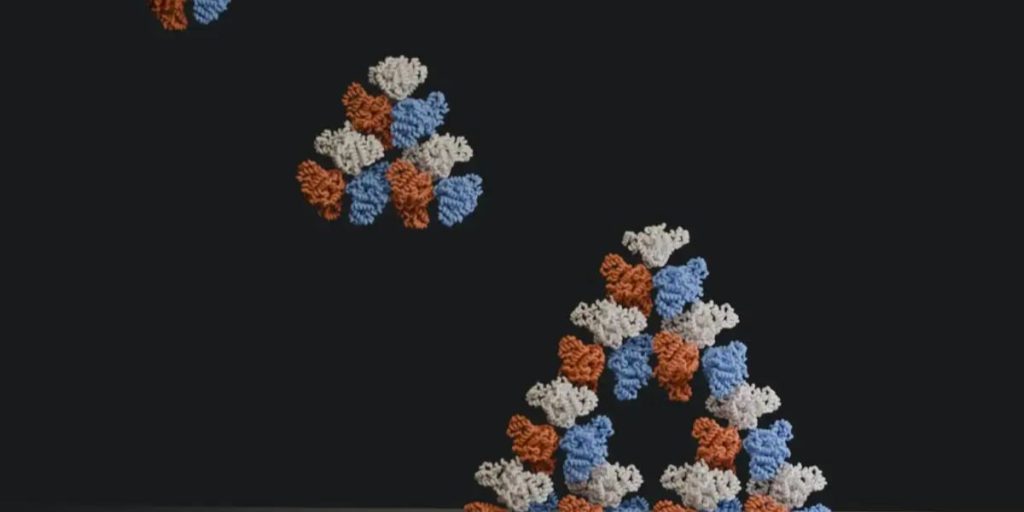A bacterium has evolved an enzyme that forms a fractal structure, a mathematical pattern that repeats itself on smaller scales.
Fractal patterns can be found throughout nature on huge, macroscopic dimensions, such as in Romanesco broccoli or fern plants, but they have never been observed at the molecular level.
Georg Hochberg of the Max Planck Institute for Terrestrial Microbiology in Marburg, Germany, and colleagues identified the molecular fractal in an enzyme produced by the cyanobacterium Synechococcus elongatus.

Citrate synthase is an enzyme that many organisms employ as part of the Krebs cycle, which is a series of chemical reactions that generate energy. In S. elongatus, the enzyme can form a Sierpiński triangle, a unique shape with fewer triangular gaps.
The citrate synthase is made up of a single building block, or monomer, that may be arranged into many configurations, some of which aid in the breakdown of molecules in the Krebs cycle. Hochberg and his team discovered using an electron microscope that the monomers in S. elongatus may assemble into a triangular shape comprising six monomers, which can then unite with two others to produce an 18-monomer shape. Combining this with two more creates a 54-monomer shape, similar to a Sierpiński triangle.
By comparing the fractal enzyme to genetic sequences from other bacteria, the researchers was able to trace its evolution. “It popped into existence very suddenly and was then almost immediately lost again by a few different versions of bacteria, and only stuck around in this one cyanobacterium, which makes our discovery of it almost more bizarre because our chances of finding it were basically near zero,” Hochberg said.
Although the researchers believe the bacterium’s fractal structure may have provided an evolutionary benefit, they were unable to detect any noticeable effect from deleting the enzyme in lab testing. “The cyanobacteria do not appear to care whether it is present or not,” adds research member Franziska Sendker, also from the Max Planck Institute for Terrestrial Microbiology.
“Perhaps there are more of these complex, fractal-like shapes in nature, just because people haven’t looked for them,” says Ard Louis from the University of Oxford. “Fractals are straightforward algorithmically. They should be rather simple to evolve. Even if they are not adaptive, they could occur in a broader range of protein complexes.”
It would be intriguing to explore if the two-dimensional triangular structure might be merged into three-dimensional structures such as a tetrahedron, says Nico Bruns of the Technical University of Darmstadt in Germany.
“It would make a nano-size container with defined edges with an interior and exterior, and then you’re in the realm of protein cages and capsules that you can use to encapsulate and release products and other molecules of interest.”
Read More:
- Bird flu detected in U.S. dairy cows for the first time
- States with the Worst Drivers in the US, Texas Ranks First